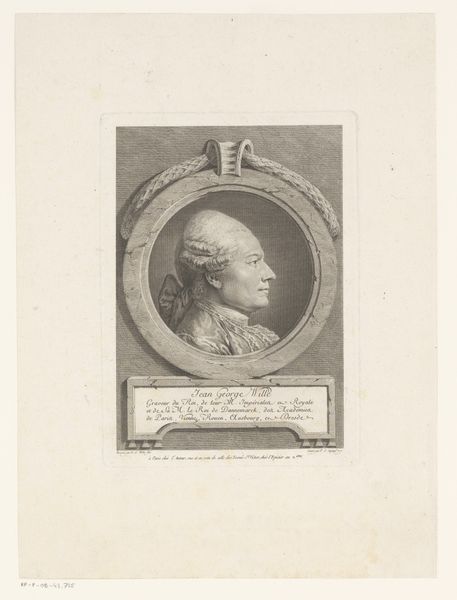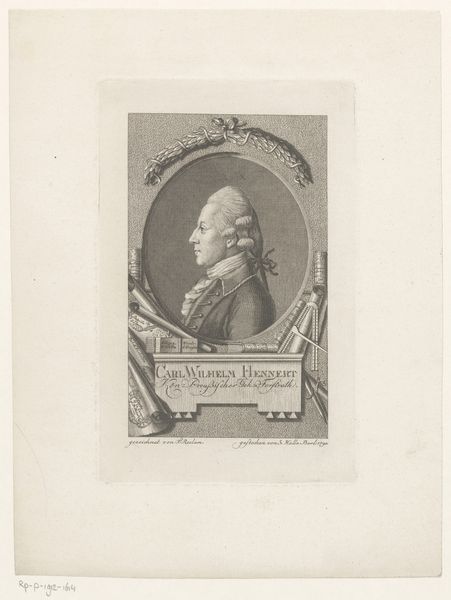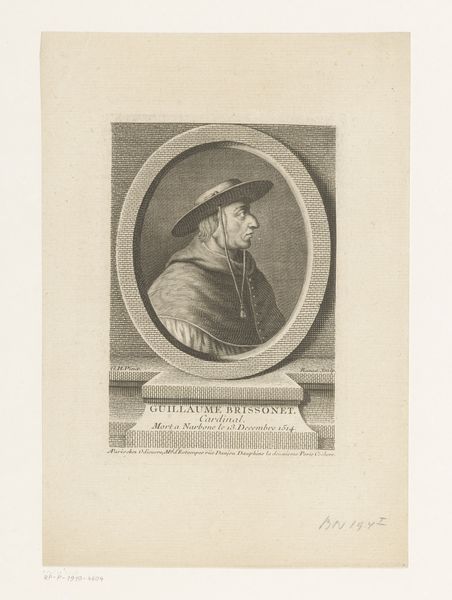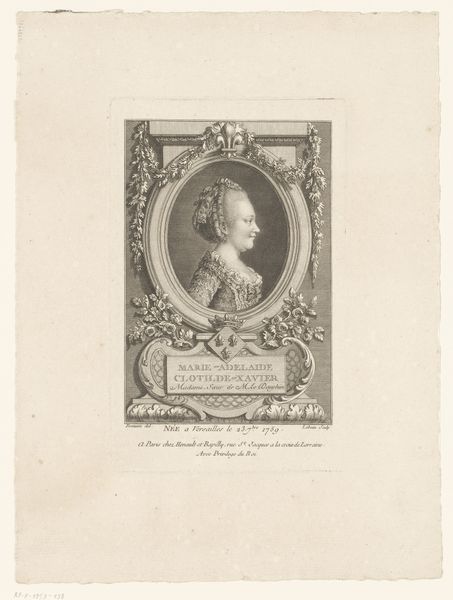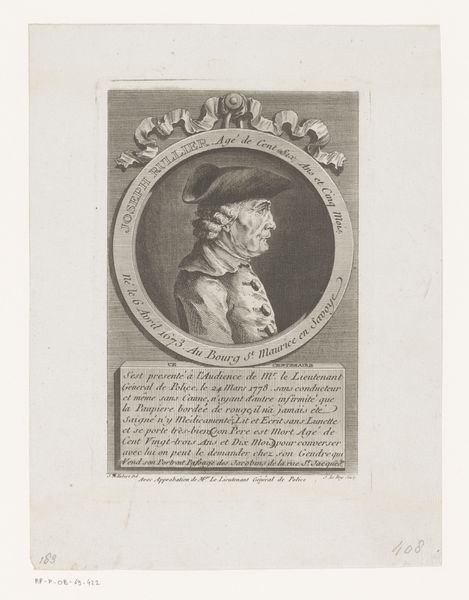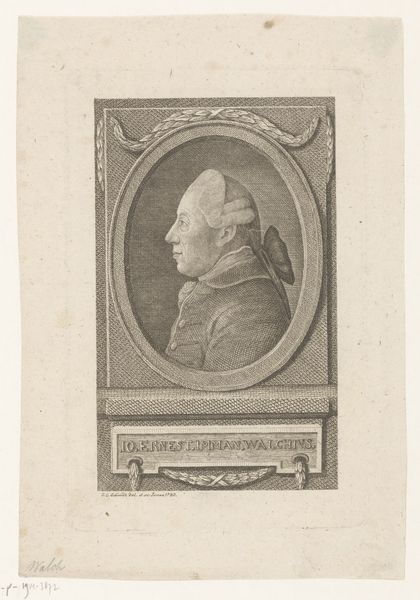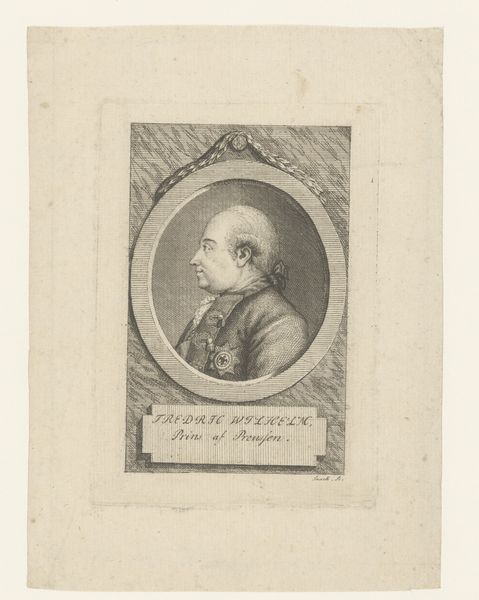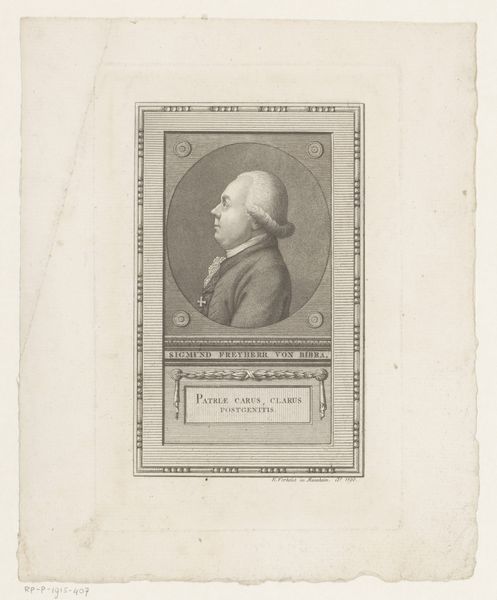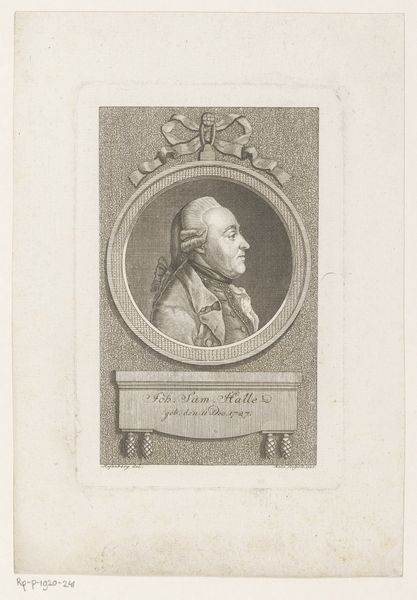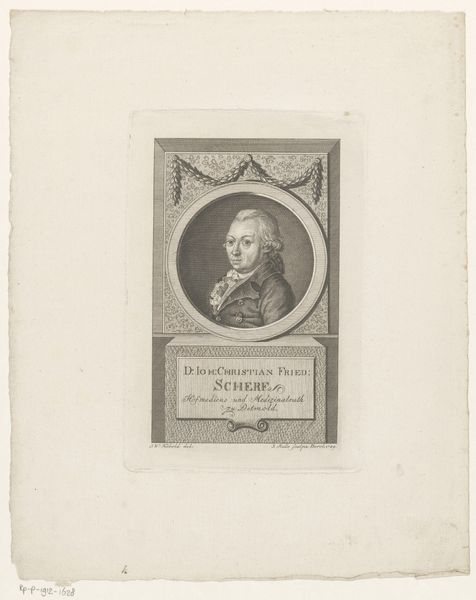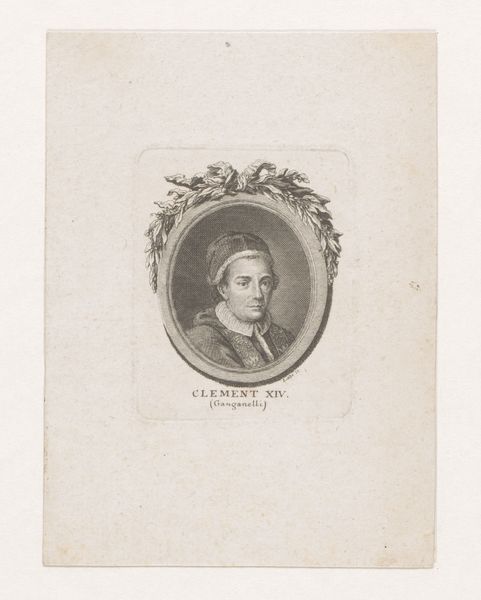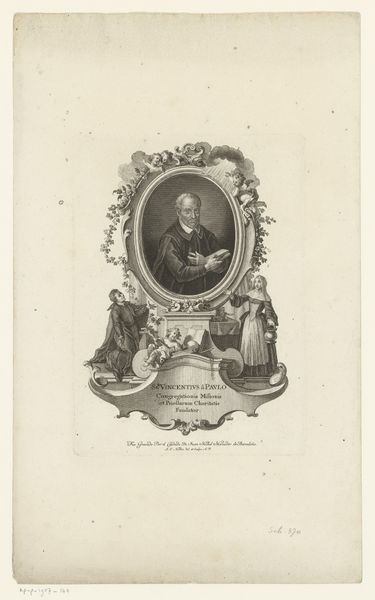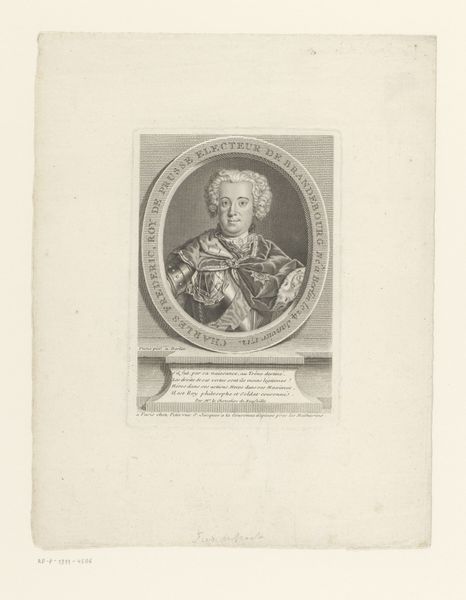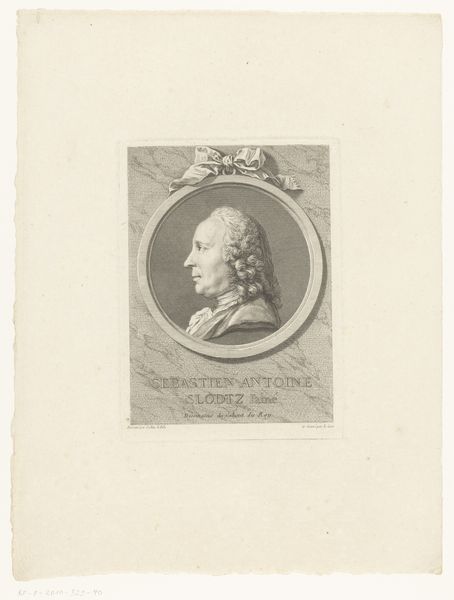
Dimensions: height 230 mm, width 178 mm
Copyright: Rijks Museum: Open Domain
Curator: Here we have a historical intaglio print titled "Portret van Johann August von Ponickau." Carl Gottlieb Rasp likely created it sometime between 1762 and 1807. The printmaking technique employed is particularly detailed. Editor: My initial feeling? Intimate, almost contemplative. There's a somber quality evoked by the medium and the sitter's expression, heightened by the baroque framing. Curator: Looking at the materials, we can infer a complex process of creation. The engraver's skill would involve applying precise pressure and acid etching to render the lines visible and give the print its fine detail. Consider the labor involved! Editor: Absolutely. And what does it tell us about the construction of identity in the late 18th century? The portrait isn't merely representational; it signifies status. The fur hat, the detail of the clothing—they speak to the subject's societal position, not simply his person. Consider the message it sends. Curator: That aligns with Rasp's work in rendering official likenesses, typically reserved for the wealthy elite. This Baroque portrait reinforces such established hierarchy of that time period and is indicative of social structures embedded in material culture. Editor: Exactly, Rasp has crafted much more than an image. The work provides insight into power dynamics. This portrayal subtly reinforces prevalent norms by representing this individual within a tradition of elitist representation. What choices did the artist make, knowingly or unknowingly, that re-entrench such structures? Curator: That makes me think of the dispersal of the prints in relation to how this image circulated among different segments of society and its relationship to concepts of identity and legacy, even consumption. Editor: Indeed. These artifacts offer critical insights into understanding how status and social distinctions were reinforced through visual culture. Reflecting on Rasp's print today, we can explore themes about legacy and visual rhetoric as much as Baroque conventions.
Comments
No comments
Be the first to comment and join the conversation on the ultimate creative platform.
